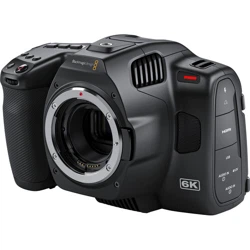Loading ...
Loading ...
Loading ...

The distance the lines move away from the central crosshair is proportional to the amount of
roll or tilt. After you calibrate the camera’s motion sensor, the vertical line turns blue when the
camera is aligned to the roll axis and the horizontal line turns blue to indicate the camera is aligned
to the tilt axis.
Note that if the camera is tilted straight down for an overhead shot or straight up, the horizon
meter takes this into account. If you roll the camera to shoot in portrait orientation, the horizon
meter rotates its axes 90 degrees.
This table shows examples of the horizon meter indicating tilt and roll of the camera.
Horizon meter Description
Straight and level
Tilted down and level
Straight and rolled left
Tilted up and rolled right
For normal use, calibrate the horizon meter for straight and level operation. If you want to use the
horizon meter to help maintain a consistent ‘dutch angle’ or a consistent tilt for a low or high shot,
you can calibrate the horizon meter at an incline. For information on how to calibrate the horizon
meter, see the ‘motion sensor calibration’ section.
Crosshair
The ‘crosshair’ setting places a crosshair in the center of the frame. Like thirds, the crosshair is a
very useful compositional tool, making it easy to frame the subject of a shot in the very center of
a frame. This is sometimes used when filming scenes that will be assembled using very fast cuts.
Keeping viewers’ eyes focused on the center of a frame can make rapid editing easier to follow.
Dot
The ‘dot’ setting places a dot in the center of the frame. This works in exactly the same way as the
‘crosshair’ setting, albeit with a smaller overlay that you may find lessintrusive.
TIP For information on enabling grids on your HDMI output, see the ‘monitor settings’
section in this manual.
Safe Area Guides
The ‘safe area guides’ setting toggles the safe area guides on or off the LCD touchscreen, as
well as setting the size of safe area guides for the HDMI output.
Safe areas can be used in broadcast production so the most important parts of a shot can be
seen by viewers. By keeping the most important parts of your shot inside a central ‘safe area,’
you can avoid cropping on some televisions, as well as leaving space for a broadcaster to add
bugs, news tickers and other overlays along the edges of the screen. Many broadcasters
require footage to be submitted with important content, such as titles and graphics, contained
inside the 90% safe area.
44Touchscreen Controls
Loading ...
Loading ...
Loading ...
